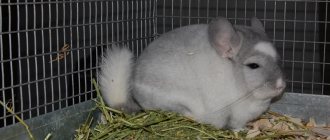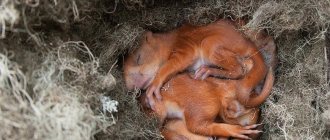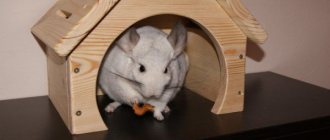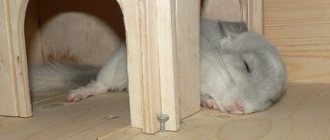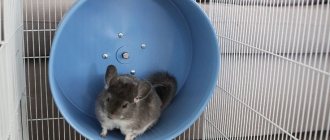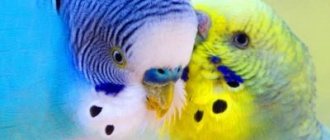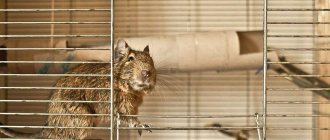Before purchasing a fluffy and very active animal, you need to arrange a place for it to live. Like all rodents, chinchillas love to taste everything. An animal running freely around the house includes chewed furniture, baseboards, walls and electrical wires. This not only outrages the owners, but also poses a danger to the chinchilla itself.
There are commercially produced cages for chinchillas, but not all pet stores can buy them. In addition, a purchased cage provides only the minimum needs of the animal, and the owner usually wants his pet to be happy. You can make a custom cage for a chinchilla yourself.
Cage requirements
A chinchilla cannot be placed in the first cage that comes along. Representatives of this family of rodents are very demanding in terms of living conditions. Therefore, when purchasing a cage, there are several key points to consider.
Dimensions
Chinchillas are very active animals. They have powerful hind legs, with which they can easily jump and climb vertical surfaces. Therefore, the fluffy will need spacious housing. The optimal cage size for keeping one chinchilla is considered to be 25x30x80 cm. If you plan to buy 2 chinchillas at once, then these parameters are accordingly increased by 2 times.
To prevent your pet from feeling cramped, it is better to buy a two- or three-tier cage. In nature, chinchillas live in highlands, so they will like the presence of upper floors.
Material
Currently, in pet stores you can find cages for rodents made of wood, plastic and metal. Experienced breeders recommend choosing the latter option. This is explained by the presence of several significant advantages in metal structures:
- metal is an absolutely safe material because it does not release toxic compounds into the air;
- metal structures are the most durable - they can withstand even the strong teeth of a chinchilla;
- metal does not absorb odors at all;
In addition, metal structures are very easy to care for. Any dirt can be easily removed from their surface. Therefore, washing the cage usually takes no more than 15-20 minutes.
Other
In addition to the size and material of manufacture, there are additional requirements for a cage for keeping a chinchilla. For example:
- It is better to choose a design with a pull-out tray . This will allow you to replace the filler in literally 5 minutes, without disturbing your pet.
- The distance between the cage rods should not exceed 2 cm . The chinchilla skeleton easily compresses, stretching in a vertical direction. Therefore, with wider gaps, the probability of escape is high.
- The cage must be well ventilated . Only the bottom and/or back wall can be solid. Chinchillas do not tolerate stuffiness and high temperatures very well. Therefore, nothing should interfere with intensive air circulation.
- The entrance to the cage should be spacious enough so that the owner’s hand with the pet sitting on it can easily pass through it.
Also, the chinchilla's cage must be safe. Before letting the animal inside, you need to make sure that there are no broken or protruding rods or other sharp interior elements.
Farm cage
A chinchilla cage on a fur farm is almost no different from a rabbit cage. The only differences are an additional shelf above the floor of the cage and a passage for the male, who mates with 4–8 females at once on the farm. You can also make a cage for a fur chinchilla with your own hands.
For this you will need:
- galvanized mesh;
- scissors for cutting metal;
- clamps;
- pliers.
Manufacturing process:
- The mesh is marked and cut into pieces.
- An additional shelf is tightly attached to one of the side parts.
- Then all sides are secured with clamps.
- A door is cut out in the front part of the cage and hung on the fasteners.
- A passage is made in the side walls for the male chinchilla and covered with a small tunnel. The tunnel is needed so that the male can rest.
- They place a feeder, a water bowl, a nursery and a house in the cage and let the chinchillas in.
On a note! You can take a rabbit house.
If necessary, houses are made independently according to the same scheme as for rabbits.
Chinchilla display
Nowadays, more and more chinchilla owners prefer to keep their pets in specialized display cases. This type of home for rodents differs from a cage in size, material of manufacture, the presence of several floors and large doors. Showcases for keeping chinchillas have both their pros and cons:
Advantages and disadvantages
wood is the most environmentally friendly material, closest to natural living conditions;
Wooden structures make it convenient for fluffies to grind down their teeth;
the display cases are spacious enough to give your pet room to spread out;
Chinchillas kept in display cases produce less noise.
wood has high adsorbent properties, so the smell of urine will emanate from the display case over time;
the display case is less ventilated;
wooden structures cannot be washed with household chemicals.
It is worth noting that modernized display cages made from profiles or combined materials have recently appeared on sale.
What is a showcase for?
A display case for chinchillas is needed for their comfortable and cheerful life. Animals feel uncomfortable in cramped cages. For security and maximum comfort, the display case for chinchillas should be closed. In its manufacture, various materials can be used (chipboard, natural wood, plexiglass).
Of course, natural wood is considered the best material. It is safe, does not release toxins and is durable. But at the same time, wood absorbs odors and deteriorates due to high humidity. Products made from chipboard and aluminum profiles are considered a good choice. They are more practical, durable and resistant to negative factors.
Important: veterinarians recommend keeping mobile chinchillas in tall structures with numerous shelves and stairs. It is also necessary to place wooden objects in their housing so that the animals sharpen their teeth on them.
Does your chinchilla like to sharpen his teeth?
How much does it cost to house a chinchilla?
Buying a cage is quite an expensive undertaking. To purchase a standard design you will need from 3 to 5 thousand rubles. Prices for display cages have no limits at all. Even for a modest house for a pet you will have to pay 5-7 thousand. And for a spacious, equipped display case with an interesting design, manufacturers will ask from 20 to 30 thousand.
In order to save money, you can look for a cage or display case for a chinchilla on specialized ad platforms such as Avito or Yula. Former furry owners sell used cages for 2-3 times cheaper.
What structures cannot be used
Sometimes chinchilla owners, trying to save on the purchase of a specialized cage, keep their pets in structures that are completely unsuitable for this. Under no circumstances should you use the following as a home for chinchillas:
- Small cages - furry cats need space to move freely.
- Plastic containers and glass jars. Firstly, such structures are too cramped. Secondly, jars and containers do not allow air to pass through well, which is dangerous for the health and even the life of chinchillas.
- Carrying. Such structures are intended only for short-term transportation of animals.
Some chinchilla owners manage to place fluffies even in large cardboard boxes. But a pet will literally chew such a flimsy house within a day.
How to make it yourself
It is not at all necessary to spend money on buying a home for a chinchilla. You can make a high-quality cage with your own hands. To work, you will need to prepare the following tools and materials:
- laminated chipboard sheets;
- screws and screw ties;
- galvanized mesh;
- PVC tape;
- planks;
- screwdriver;
- glass 5-6 mm thick and hinges for it;
- drill;
- jigsaw;
- pliers;
- marker.
Making a cage at home is not as difficult as it seems at first glance. The main thing is to strictly follow the instructions below. The algorithm of actions is as follows:
- First you will need to draw up a drawing to scale. In this case, it is necessary to provide not only the size of the cage, but also the presence of free space in the finished structure, without which an active pet will experience discomfort.
- Then, using a marker, you need to make markings on the chipboard sheets and cut out the side walls, bottom and roof to the appropriate sizes. In the parts that are intended to accommodate the door and mesh, you will need to cut out the middle using a jigsaw, leaving only the frames.
- The mesh must also be cut with pliers, after which it must be secured to the side walls using self-tapping screws.
- To make a pallet, you need to cut out the bottom and sides 9-10 cm high from laminated chipboard, which are connected to each other with self-tapping screws. To add strength to the resulting structure, it is better to glue a strip from below.
- It is necessary to place the side and back walls into the resulting pallet to make sure that everything fits in size. Then connect the parts using a drill and screw ties.
- Then you need to attach the bottom and ceiling to the resulting base, and install hinges on the doors that will hold the glass.
- Next, you can work on the interior - fix all the planned shelves and ladders inside.
The final stage of work is cladding. You will need to hide the screws using plugs, and then seal all the edges of the assembled display case with film.
Town
Chinchillas are animals prone to obesity, and they need active movement just like food and water. You can make chinchillas move by building them easy-to-climb routes in the “town.”
The town includes:
- running wheel for chinchillas;
- shelves fixed at different levels;
- transitions between shelves.
The variety of transitions is limited only by the imagination and skill of the chinchilla owner.
It can be:
- suspension bridges;
- tunnels;
- stairs;
- swing.
The only requirement for all these products is natural wood without paint or varnish. You can make transitions from unsanded branches of edible tree species. And change it periodically.
The role of a transition, a toy and a place to rest is simultaneously performed by a hammock for a chinchilla suspended in a display case. It is made from dense non-stretch fabric. Denim suits well. They secure it so that the chinchilla can jump into the hammock, but cannot swing it too much.
In addition to shelves and passages, the town must have a running wheel and a treadmill. The wheels are sold in pet stores and are designed for all active small animals. You need to buy a wooden or plastic one, as a metal wheel can be dangerous for a chinchilla. But you can do it yourself.
DIY chinchilla wheel
To make a wheel you will need:
- 2 sheets of plywood with a side of at least 40 cm and a thickness of at least 1 cm;
- up to 10 figured meter slats;
- automobile tension bearing;
- drill;
- drill 12 mm;
- self-tapping screws;
- 2 bolts with a diameter of 12 mm: long and short;
- screwdriver;
- washers for bolts;
- nuts for bolts;
- jigsaw
Manufacturing technology:
- Find the middle in the pieces of plywood and drill holes. Using a jigsaw, cut out 2 circles of 30 cm in diameter.
- One is left, another circle with a diameter of 25–27 cm is cut out of the other. Only a large circle will be needed from this circle.
- The slats are cut into pieces about 15 cm long. The size of the slats depends on the chinchilla. The animal must fit freely into the wheel.
- The cut slats are attached closely to the ends of the circle and the cut out circle.
- Put a washer on the long bolt, insert the bolt from the inside into the wheel, put on another washer and screw the structure with a nut.
- A hole for a bolt is drilled in the wall of the display case.
- The center of the bearing is aligned with the hole in the wall and the bearing is screwed in with self-tapping screws.
- The wheel with the bolt is inserted into the bearing and tightened with a nut from the outside of the display case.
The video shows in sufficient detail how to make a running wheel for chinchillas.
Treadmill
For chinchillas, this is an additional device, and it is easier to buy it in a store. There it can be sold as a treadmill for decorative hedgehogs. She looks like this.
Now the display case contains everything necessary for a happy life for chinchillas. All that remains is to figure out what a walking ball is.
Chinchilla ball
This is a device that a chinchilla should not have. The plastic ball transmits infrared rays very well and heats up from the inside. Chinchillas do not tolerate heat well. Half an hour in such a ball is enough for the animal to die.
In such a ball, some careless owners of small animals let them “walk” in the fresh air and eat the green grass that falls into the cracks of the ball. Juicy food is contraindicated for chinchillas. And the stress of a walk is much more harmful than being in a spacious display case.
Where to put the cage
Once the cage is ready for the furry to move in, you will need to choose a suitable place to install it. This point is very important, since chinchillas are very sensitive to environmental conditions. Therefore, when choosing a place to install the cage, you need to consider the following recommendations:
- The room should be cool. The optimal temperature for keeping a chinchilla is +18-22ᵒС. When the indicator increases to +24-25ᵒC, the pet’s well-being noticeably worsens. Chinchillas naturally live in the mountains, where the climate is quite harsh, so they do not tolerate heat well.
- The air humidity in the room should be between 45-50%. The fact is that chinchillas have very thick and dense fur, which instantly gets wet in high humidity. At the same time, the fur coat of fluffies takes a very long time to dry, which often becomes the cause of colds.
- Chinchillas are very timid, they fall into a stupor at every foreign sound or at the sight of a stranger. Therefore, it is better to install the cage in an isolated, non-passable room, where no one and nothing will disturb the pet.
- It is necessary to protect the chinchilla cage from direct sunlight. Chinchillas are crepuscular animals and prefer to sleep during the day. Therefore, it is better to place the cage in a shady room. If this is not possible, it is necessary to protect the windows with thick curtains or blinds so that the sun does not interfere with the animal’s rest.
It is also worth considering that the activity of chinchillas increases noticeably at night. Therefore, people who are sensitive sleepers should avoid installing a cage with a pet in the bedroom.
To ensure that your chinchilla always feels comfortable, it is recommended to install a split system in the room with the cage. You just need to install the air conditioner in such a way that cold air does not fall directly on your pet.
Plexiglas cage
This version of the cage is made according to a similar principle - a metal frame is assembled from corners, but the walls of the cage, as well as the door and lid, are made of plexiglass. In a home for chinchillas with plexiglass walls, it is necessary to provide windows for ventilation, otherwise the animals will suffer from high humidity and musty air.
The windows are cut out in several places and covered with a metal mesh. The advantage of such a cage is greater cleanliness around, good sound insulation. Animals do not chew plexiglass, and if the panel is scratched, it can be easily replaced. The downside is that you need to carefully consider the ventilation system and wash the glass regularly.
Arrangement of the cage
In order for a chinchilla to feel comfortable, the cage must be properly equipped. To do this, you will need to install the following accessories inside:
- House . In natural conditions, chinchillas are nocturnal and spend time during the day in rock crevices and burrows. Therefore, they need to have a shelter where they can hide from the sunlight and take a nap. Today, pet stores sell both plastic and wooden models. The first are more practical, the second are environmentally friendly. Therefore, if possible, you can buy a wooden house and change it every 2-3 months.
- Drinker and feeder . You can use regular metal or plastic bowls as dishes for your chinchilla. However, the animal will constantly carry them in its teeth, scattering food and spilling water. Therefore, it is better to buy specialized feeders and drinking bowls at the pet store, which are firmly fixed to the cage.
- Sennitsa – hay forms the basis of the chinchilla’s diet. Therefore, it should always be in the cage in unlimited quantities and freely available to the animal. An inverted running wheel attached to a cage frame is usually used as a hayride.
- Equipment for exercises . During wakefulness, chinchillas do not like to sit still. They are on the move, playing, exploring the world around them. Therefore, to prevent the animal from getting bored, it is necessary to install a so-called play complex for it in its cage. It can include a running wheel, ladders, tunnels and just small wooden toys. Also, the cage must have 3-4 wooden shelves - chinchillas simply love to sit on them.
- Hammock . So that the fluffy can take a little rest after active games, it is recommended to hang 2-3 hammocks in the cage. If desired, the chinchilla can even take a nap in them.
- Mineral stone . Chinchillas' teeth grow continuously, so they need to be constantly ground down. In nature, the animal sharpens its teeth on twigs and tree bark. And for these purposes, you can put a special mineral stone in the cage, which is sold in any pet store.
- Bathing suit . Because of their thick fur, chinchillas never take water treatments or even lick their fur. In order for your pet to be able to remove dirt and hairs that have fallen out of its coat, it is enough to place a bathing suit covered with sand or volcanic ash in the cage every day for 20-30 minutes.
- Tray . Chinchillas are quite smart animals. Therefore, with some effort and spending very little time, you can train your pet to go to the toilet in the same place.
Also, when keeping a chinchilla, you will have to buy food and litter on an ongoing basis. The latter should be in the form of corn pellets or sawdust.
Just under no circumstances should you put pine filler into a chinchilla’s cage, as it can cause allergies in the fluffy one.
The choice of food must also be approached responsibly. To ensure that your pet always feels good, you should give preference to specialized mixtures for feeding chinchillas, consisting mainly of herbs.
What kind of cage should a chinchilla have, how to choose and how to make a house for a pet with your own hands - all these questions need to be studied before purchasing a pet. Then the owner of the animal will have time to carefully prepare for the meeting of a new family member.
Cage from an old closet
The simplest and most economical option. If you have an old cabinet with glass doors at home, it can easily be converted into a spacious cage. To do this, several windows are cut out on the sides for ventilation, which are covered with mesh. You can also make a window on the roof. The internal space is divided into shelves, in which convenient openings are made and ladders are installed. A special lock must be attached to the glass door. Several drinking bowls, a feeding trough are installed inside, and a manger for hay is hung separately. The upper level is most often equipped with a house and hammocks, and in the middle there are toys and tunnels.
